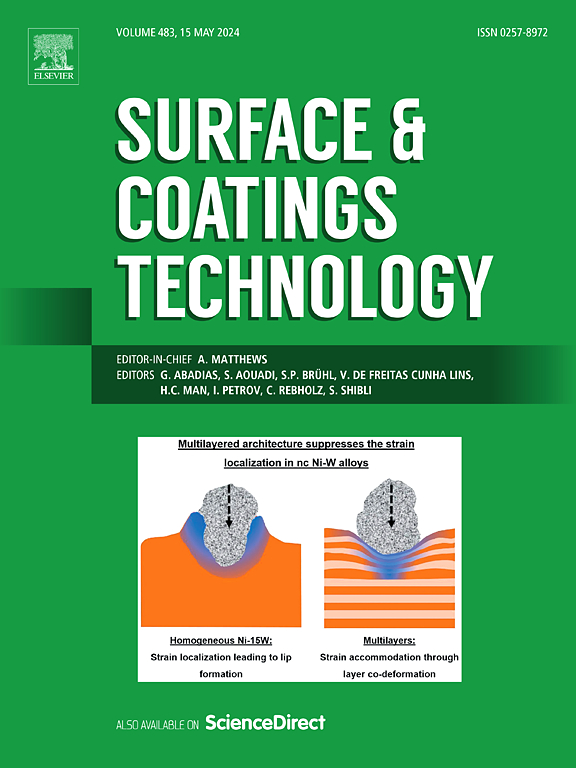Self-assembly of metal-ceramic nanocomposites within Cr-based coatings exhibiting superior oxidation resistance in high-temperature atmosphere
IF 5.3
2区 材料科学
Q1 MATERIALS SCIENCE, COATINGS & FILMS
引用次数: 0
Abstract
The deposition of coatings is considered the most promising solution to improve the high-temperature oxidation resistance of the commercially used Zircaloy nuclear fuel cladding. However, in high-temperature conditions, although metallic coatings possess good adhesion to the cladding, their oxidation resistance is poor. On the contrary, ceramic coatings exhibit better oxidation resistance but lower structural stability. To effectively address these issues, in this work, a carbon-doped metallic multi-layered Cr/CrAl coating was designed to operate stably during routine working conditions. Unexpectedly, the developed coating can be self-assembled into metal-ceramic nanocomposite structures at elevated temperatures like a loss-of-coolant accident (LOCA). The self-assembled Cr2AlC MAX phase and the CrxC ceramic nanoparticles within the transformed Cr2Al coating lead to superior oxidation and corrosion resistance in high temperatures. An oxidized weight gain at 1200 °C steam oxidation experiments is only 18.5 % of that of the bare Zircaloy. Moreover, the coating displayed excellent density and good adhesion strength without any cracking effect near the interface between the coating and the substrate. In-depth first-principles calculations demonstrate that the superb oxidation resistance of the coating originated from the prevention of Al diffusion by the Cr2Al intermetallic compounds and the CrxC ceramic nanoparticles. Our work provides valuable insights and paves the way for developing novel self-assembling coatings with excellent oxidation resistance required for accident-tolerant fuel cladding.
求助全文
约1分钟内获得全文
求助全文
来源期刊

Surface & Coatings Technology
工程技术-材料科学:膜
CiteScore
10.00
自引率
11.10%
发文量
921
审稿时长
19 days
期刊介绍:
Surface and Coatings Technology is an international archival journal publishing scientific papers on significant developments in surface and interface engineering to modify and improve the surface properties of materials for protection in demanding contact conditions or aggressive environments, or for enhanced functional performance. Contributions range from original scientific articles concerned with fundamental and applied aspects of research or direct applications of metallic, inorganic, organic and composite coatings, to invited reviews of current technology in specific areas. Papers submitted to this journal are expected to be in line with the following aspects in processes, and properties/performance:
A. Processes: Physical and chemical vapour deposition techniques, thermal and plasma spraying, surface modification by directed energy techniques such as ion, electron and laser beams, thermo-chemical treatment, wet chemical and electrochemical processes such as plating, sol-gel coating, anodization, plasma electrolytic oxidation, etc., but excluding painting.
B. Properties/performance: friction performance, wear resistance (e.g., abrasion, erosion, fretting, etc), corrosion and oxidation resistance, thermal protection, diffusion resistance, hydrophilicity/hydrophobicity, and properties relevant to smart materials behaviour and enhanced multifunctional performance for environmental, energy and medical applications, but excluding device aspects.
 求助内容:
求助内容: 应助结果提醒方式:
应助结果提醒方式:


